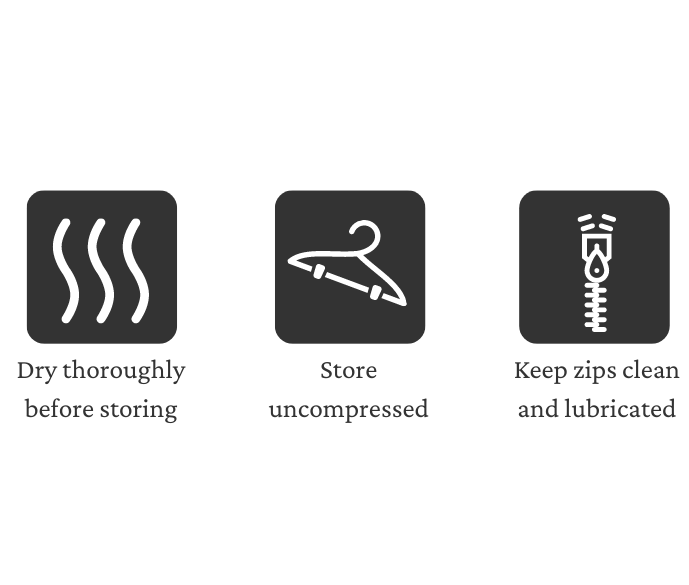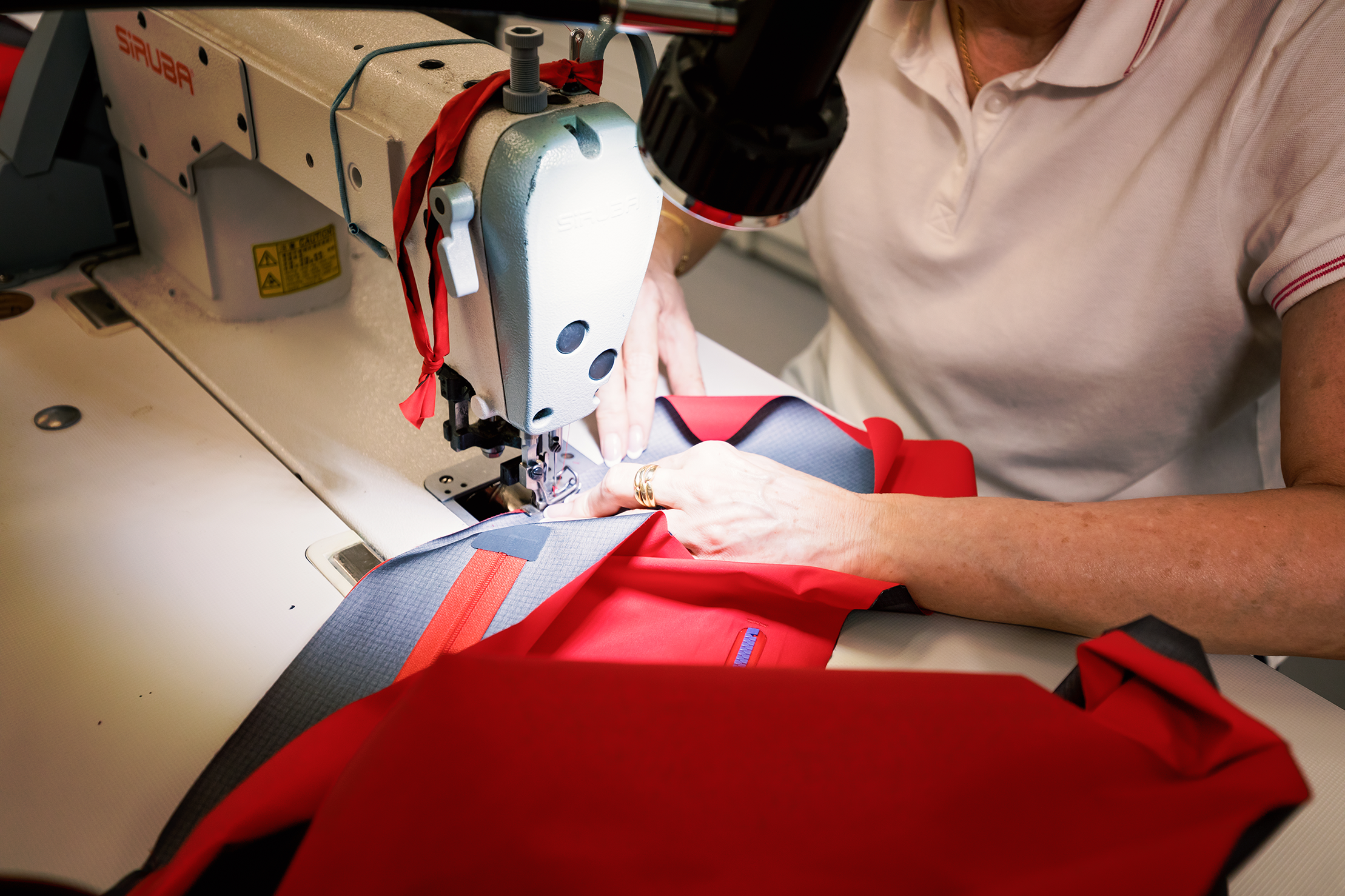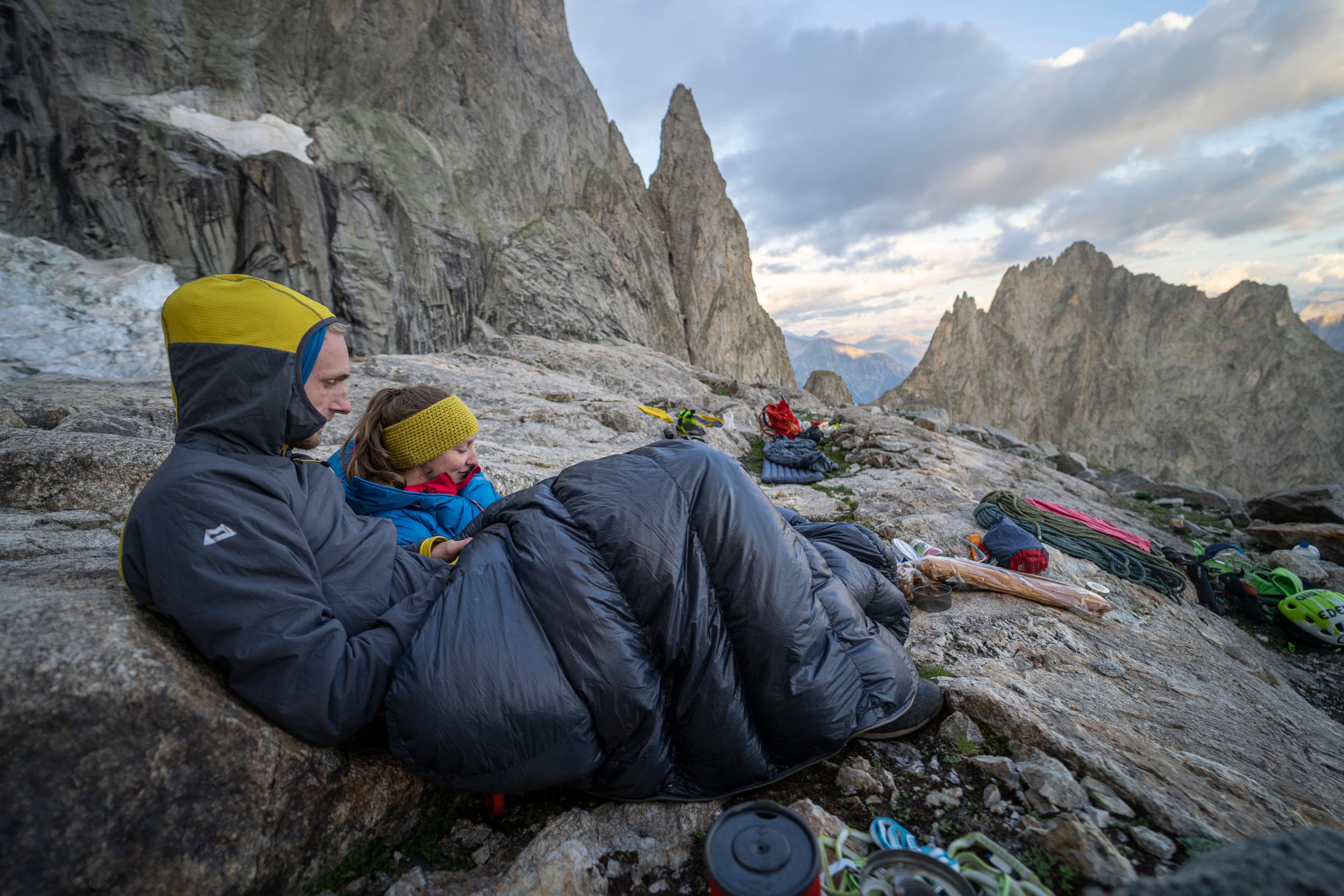General Care
With care your down insulated sleeping bag should last many years but all sleeping bags will last longer and perform better if cared for correctly. During use, especially on extended trips, air your sleeping bag whenever practical and dry thoroughly before storing.
When not in use, store your sleeping bag in a cool dry place away from direct sunlight; store uncompressed, preferably in its storage cube or storage sack, or loose in a large box or pillow case. If possible avoid storing inside its stuff-sack for long periods of time. Small stains and spillages can usually be cleaned with a damp soapy cloth but avoid washing your bag unless it really needs it. Zips should be kept clean and regularly lubed.

How To Wash Your Down Sleeping Bag
Washing a whole sleeping bag is an involved and time consuming job, and if you have any doubt about carrying out the task yourself then you should have it professionally cleaned by a specialist down cleaning service. Furthermore if you do not have immediate access to a tumble dryer, please do not attempt to wash a down sleeping bag yourself. The following advice assumes access to a tumble dryer.
You should only wash your down bag occasionally - obvious signs of dirt or odour, usually accompanied by the bag failing to loft sufficiently are usually the signs that it is time to wash your bag.
As with down-filled clothing, provided you have an adequately sized washing machine, the difficult part is not actually the washing, but the drying. Most sleeping bags can be washed in a typical household washing machine and dried in a tumble dryer. Larger bags (with more than 1000g of filling) should only be washed in large domestic washing machines or be professionally cleaned. Alternatively you may choose to hand-wash your sleeping bag. Do not dry clean your down sleeping bag.
Your bag should ideally be washed using a specialist down cleaning product such as Grangers Down Wash, Nikwax Down Wash Direct, Storm Down Wash, or Fibertec Down Wash Eco. If these aren’t available then soap flakes which can be purchased from a supermarket are also fine. Do not use detergent or fabric softener.
Before you begin, if using a machine, clean any detergent out of your washer: if you use the powder drawer, give it a thorough clean, pouring hot water down it to remove any residue. Finally, run a short rinse cycle with the machine empty to clear any remaining detergent.
Ensure all drawcords under tension are released and velcro tabs fastened. The side zip should be undone fully and the zip head disengaged.
Read the care label. Despite the care label possibly suggesting your bag can only be hand-washed, provided you select the appropriate setting, it is ok to use a domestic washing machine.
Select a programme with a low to medium spin speed setting such as Delicates, Woollens or Handwash and with a temperature setting of 30°C. Rinse extremely thoroughly (at least twice).
If hand washing, fill a large tub with warm water. Add the appropriate cleaning product as for machine washing. Gently submerge the bag - due to the amount of air contained within the bag this may be difficult to start with, but persevere. This first stage can be made easier by initially leaving the bag inside its stuff-sack when placing in the water. Once saturated the bag will quickly submerge itself. Gently wash the bag, massaging between your hands until you are satisfied it is clean. Rinse extremely thoroughly.
When removing your bag from the machine or tub, do so carefully, the bag will be heavy and the extra weight of wet filling could damage internal stitching. Your bag may well look flat, empty and / or lumpy. At this stage don’t worry.
How To Dry Your Down Sleeping Bag
Your bag now needs to be dried extremely thoroughly. This should be done slowly, using a tumble dryer set to the lowest heat setting available. Selecting a higher temperature in the hope of drying more quickly could easily damage the fabrics and components of your bag.
The drying process will take several hours, particularly for bags with more filling. During this time, periodically check (remove from the tumble dryer) the bag to ensure that it is not getting too hot. It is also important to massage the filling between your hands at frequent intervals. Start this process before the bag becomes too dry; doing so will help to tease apart any clumps and ensure that the filling regains its natural loft. This process can be aided by adding a couple of tennis balls or other small but firm items to the drum whilst drying.
Once thoroughly dried, all components such as cordlocks should be checked and zips thoroughly lubed. We recommend using a product such as Gear Aid Zipper Lubricant, McNETT Zip Care or Zipper Stick. Alternatively natural products such as Beeswax can also be used. The bag can then be stored away as normal.
Minimising Down Leakage
The fabrics we use on our sleeping bags are densely woven to ensure that fibre migration (down or fibres passing through them) is minimised. They may be ciréd under a hot roller to further increase their downproofness, or coated with micron-thick polymers to practically eliminate down migration. However, down barbs or barbules will occasionally find their way through a fabric or, more likely, through the seams.
Ranging in diameter from about 20 to just 2 microns in diameter, it is practically impossible to stop down barbs and barbules penetrating sewn seams and fabrics altogether. Feather quills may also occasionally penetrate a fabric too: quills are rigid and sharp and, just like a needle, can poke through fabrics if given the correct force and orientation.
So, if you do notice the occasional fibre poking through, this isn’t a fault. Do not be tempted to pull the down out of the bag and make a tiny hole that little bit bigger. Instead, reach behind the fabric and gently pinch the down cluster and pull it back inside the bag.

Field Repairs
Sleeping bags, especially those filled with down are by their very nature lightweight and as such the demands of climbing and mountaineering can cause damage, usually in the form of snags, tears and burns to even the most well designed product. Such damage is not covered by our warranty as this is deemed normal, if unfortunate, wear and tear. However, many of these faults can be repaired both ‘in the field’ and professionally.
-
Small Tears - Gaffa Tape / Duct tape
Gaffa Tape or Duct tape applied over the immediate tear can work effectively for short-term fixes. The outer fabric needs to be clean and dry. Any filling should be compressed flat before application. It’s unlikely to be a permanent solution.
-
Small to Medium Sized Tears etc - Tenacious Tape™ or Betrafol® Tape
Specialist repair tapes such as Tenacious Tape™ or Betrafol® Tape can be very effective at repairing small tears, but they do have a somewhat distinctive aesthetic. Please be aware however that such tapes, whilst extremely durable and often able to endure sustained use even at very low temperatures can leave residual marks which when taken off are near impossible to remove.
-
Jammed or stiff Zip Pulls
Prevention is the best form of cure so regularly clean all zips using warm, soapy water. Do not force jammed zips. If washing and lubing a zip does not free a zip, carefully inspect the zip head for obvious signs of grit or dirt. If tooth or coil damage is visible then the zip puller has already had too much force exerted on it. Only a professional repair can solve this.

Professional Repairs
Should you require a professional repair, many of the common problems which occur through use can be rectified and will ensure your sleeping bag continues to provide many more years of service. This includes partially or completely replacing zips, replacing or re-attaching drawcords, professionally patching fabric tears or nicks and repairing damaged baffles. It is also possible to replace or add additional down. Contact us for further information.
End of Life
A down sleeping bag should last many, many years and we regularly see usable down sleeping bags that are in excess of twenty and sometimes thirty years old. Should you however think your bag is nearing the end of its life please do everything you can to prolong it. Use it until it falls apart. Manufacturing sleeping bags which can be complex and involve many components and materials is very energy intensive and one of the most effective ways of reducing their environmental impact is, as strange as it may seem for us to say, to make what you buy last as long as possible and not replace it needlessly.
Here’s what you should do instead:
1) Revere it: Our products are made to be used. Learn to value the experience etched into the very fabric of your gear. Every nick, every mark is not just wear & tear but a story and a statement.
2) Revitalise it - Wash and maintain your bag when required and store appropriately. A flat and lifeless sleeping bag can be brought back to life by washing. You can do this yourself or use the services of a professional down care company. It is also possible to replace lost or degraded down.
3) Repair it - Many minor faults that may seem terminal can actually be easily fixed. It may seem expensive but think about the cost not just of a new sleeping bag but the bigger environmental cost to your consumption.
4) Relegate it - Just because your sleeping bag can no longer cope with a trip to Patagonia or snowholing in the Scottish Highlands does not mean that it isn't ‘good enough’ for a wide range of less severe uses. So consider relegating your bag to one used for summer camping trips or valley use.
5) Reappropriate it - Use the bag for something it was not originally designed for but works perfectly for. Keep an old sleeping bag in your car in case of breakdowns or that handy overnight bag for impromptu stay-overs with friends.
6) Reassign it - Just because a sleeping bag may not meet your needs any longer it may meet someone elses. Don’t use this as an excuse to not think about your own actions (!) - but there are numerous specialist charities who need outdoor gear and many groups, including homeless charities will gratefully receive donations of used sleeping bags, even if slightly damaged, provided they are clean.
7) Reuse it - Not terribly straightforward with a sleeping bag and to be honest, the previous options are so good you should never have an excuse to really consider this. If it gets to this point, use your imagination but avoid using them as dog blankets!
8) Recycle it - Recycling can save energy and resources that would otherwise be used in the manufacture of virgin materials or in the case of down, in the rearing of geese and ducks. The good news is that down insulation can now be effectively recycled via our Down Cycle initiative. The materials found within the bag itself are less easily recycled but some can be, typically being re-used in low-grade non-woven insulation for ducting etc. That’s why we’d ask that you try to do everything you can to keep your sleeping bag in use for longer.









